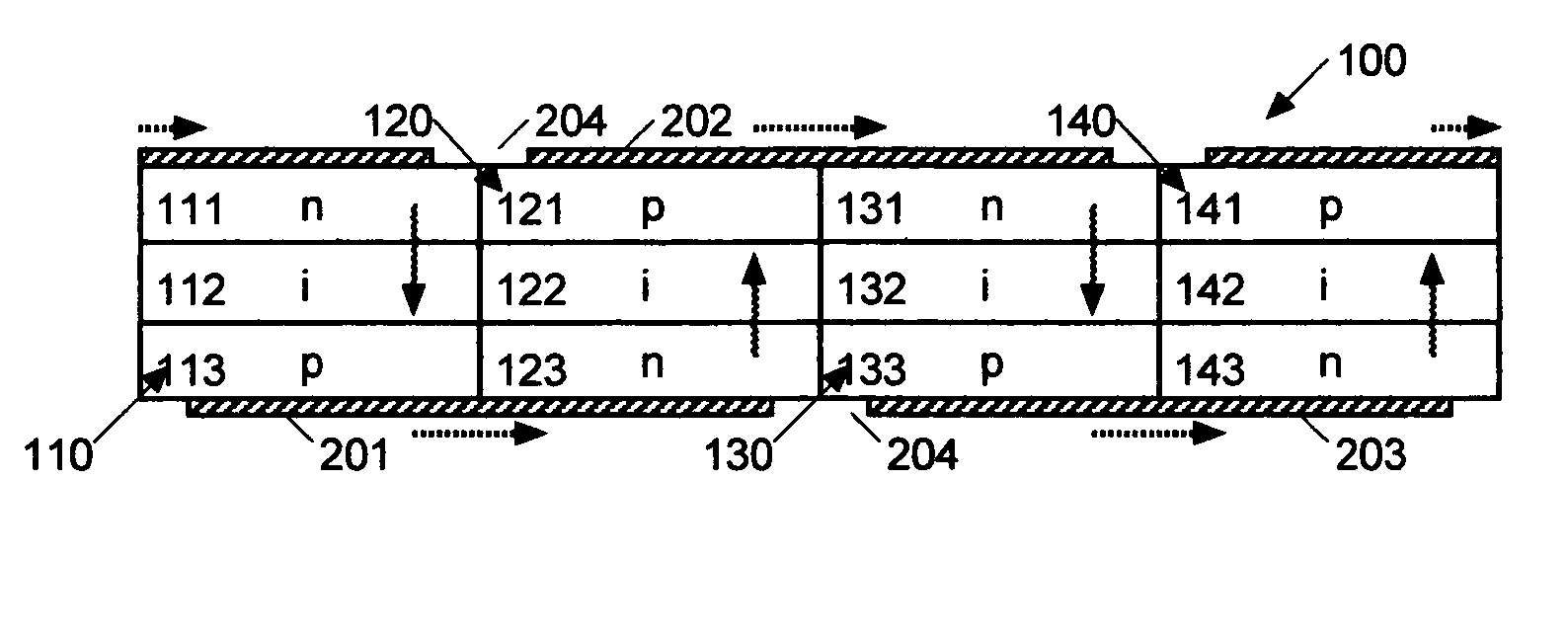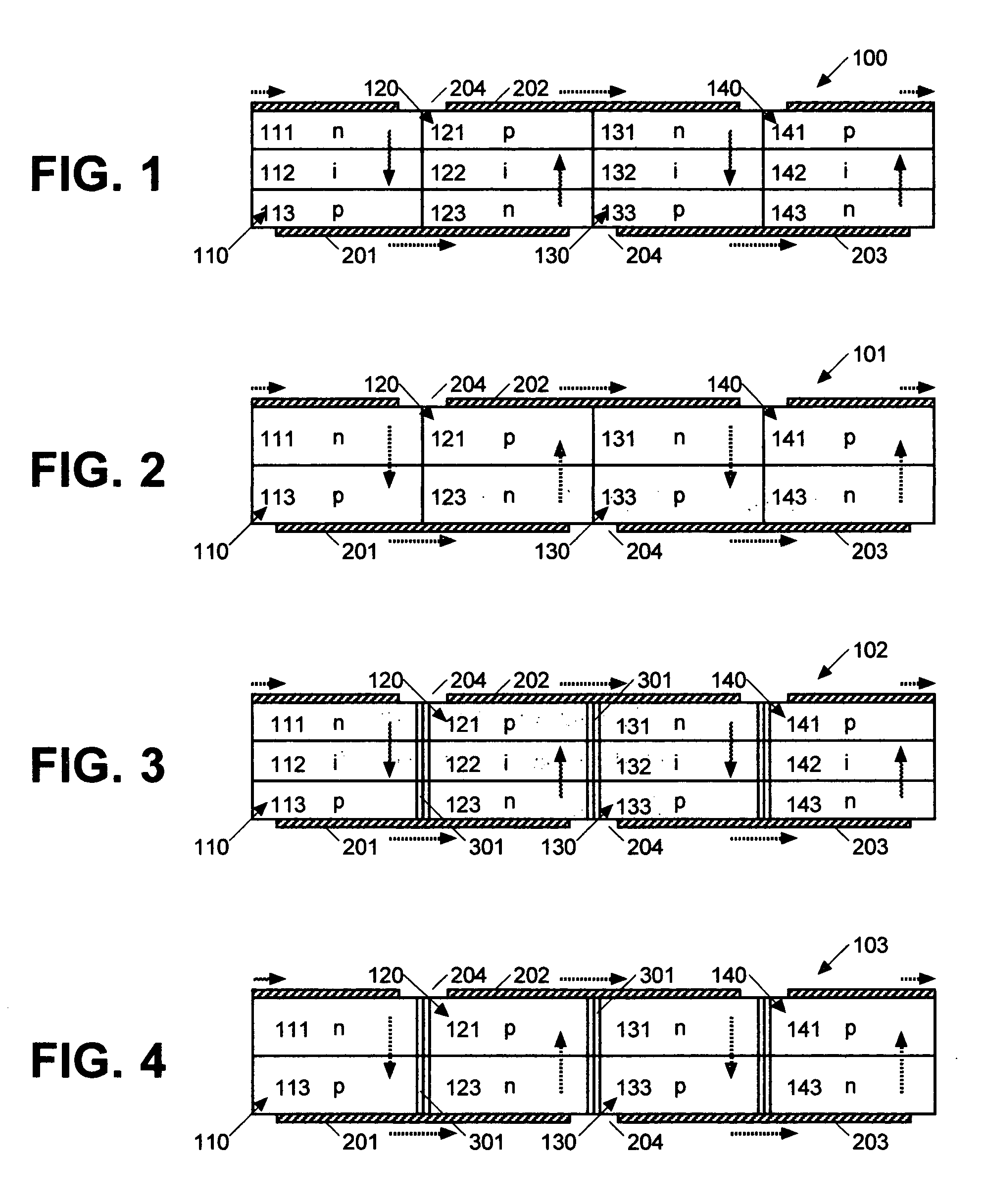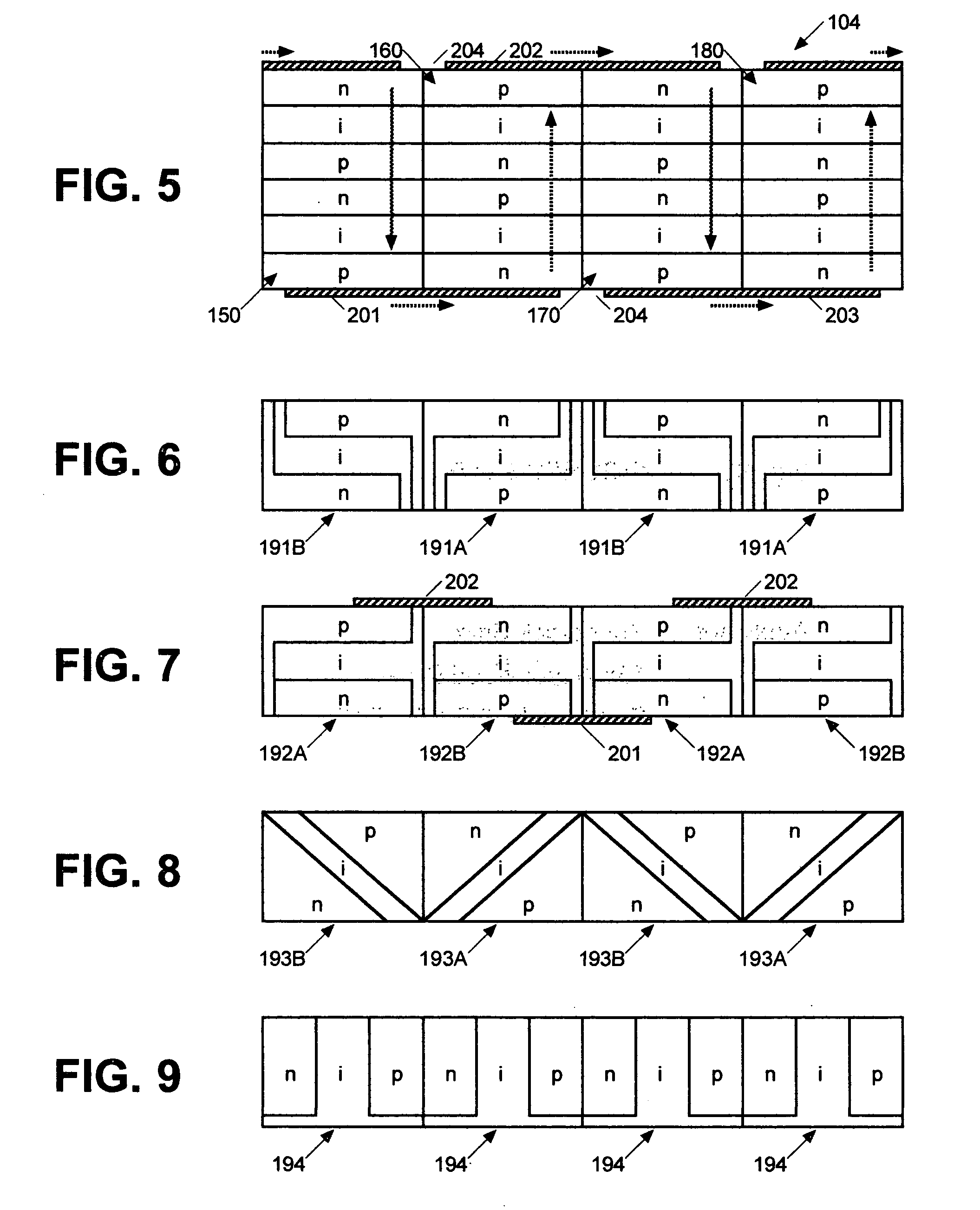Photovoltaic systems and methods
a photovoltaic system and photovoltaic technology, applied in photovoltaic energy generation, photovoltaics, electrical equipment, etc., can solve the problems of high manufacturing cost and low manufacturing yield, unfilled trenches in the lower region, and inconvenient operation
- Summary
- Abstract
- Description
- Claims
- Application Information
AI Technical Summary
Benefits of technology
Problems solved by technology
Method used
Image
Examples
Embodiment Construction
[0066] The present invention generally relates to various photovoltaic systems capable of generating electric energy in response to various electromagnetic waves projected thereupon and, optionally, at least partially transmitting such waves therethrough. More particularly, the present invention relates to planar arrangements and methods of such photovoltaic systems where photovoltaic members are electrically connected in series though top and / or bottom charge and / or planar layers thereof, through substantially horizontal contact layers connecting such top and / or bottom layer, and / or through other equivalent structures without using any conventional vertical interconnects which generally traverse multiple charge and / or planar layers vertically. As will be described herein, such series connections are obtained in such a photovoltaic system by arranging the charge and / or planar layers of adjacent members to have polarities alternating in reverse orders. In other words, the photovoltai...
PUM
 Login to View More
Login to View More Abstract
Description
Claims
Application Information
 Login to View More
Login to View More - R&D
- Intellectual Property
- Life Sciences
- Materials
- Tech Scout
- Unparalleled Data Quality
- Higher Quality Content
- 60% Fewer Hallucinations
Browse by: Latest US Patents, China's latest patents, Technical Efficacy Thesaurus, Application Domain, Technology Topic, Popular Technical Reports.
© 2025 PatSnap. All rights reserved.Legal|Privacy policy|Modern Slavery Act Transparency Statement|Sitemap|About US| Contact US: help@patsnap.com



